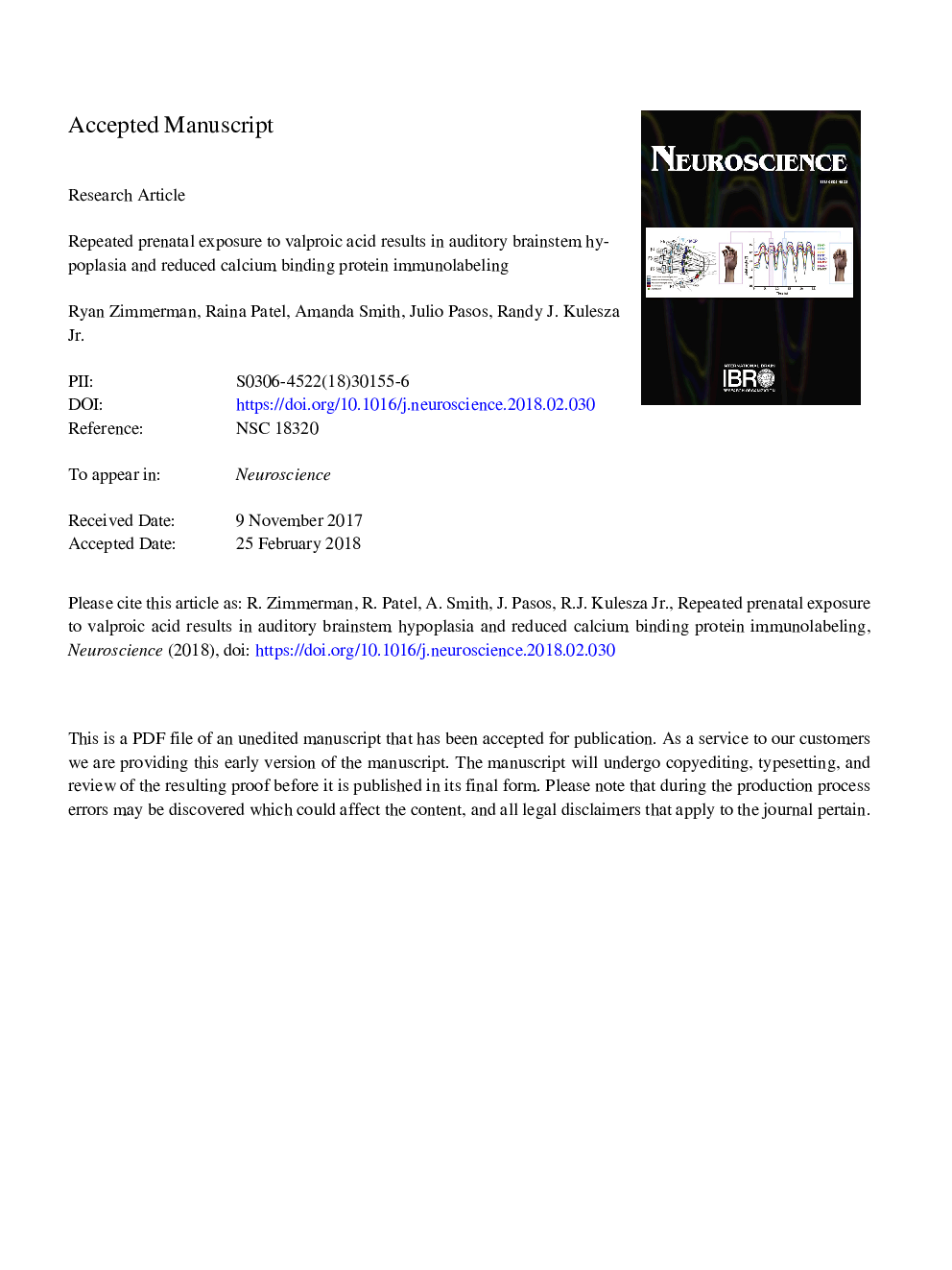| Article ID | Journal | Published Year | Pages | File Type |
|---|---|---|---|---|
| 8840853 | Neuroscience | 2018 | 56 Pages |
Abstract
Auditory dysfunction is a common occurrence in individuals with autism spectrum disorder (ASD). While most cases of ASD are of unknown etiology, in utero exposure to the antiepileptic valproic acid (VPA) significantly increases risk. We have previously identified significant dysmorphology and hypoplasia in the auditory brainstem of humans with ASD and rodents exposed to VPA in utero. Further, we have identified abnormal c-Fos immunolabeling patterns after exposure to pure tone stimuli in VPA-exposed animals. Herein, we describe the impact of repeated exposure to VPA on key components of the auditory hindbrain, the ventral cochlear nucleus (VCN) and superior olivary complex (SOC). Specifically, we examined neuronal number, neuronal morphology, immunolabeling for the calcium binding proteins calbindin (CB) and calretinin (CR), dopaminergic innervation and the structure of calyx terminals in the medial nucleus of the trapezoid body (MNTB). VPA-exposed animals had significantly fewer neurons in both the VCN and SOC. VPA had a differential impact on the size of neurons in the VCN and SOC. VPA-exposed animals have reduced CB and CR immunolabeling and a lower density of dopaminergic terminals. Finally, we saw no difference in the surface area or volume of calyx terminals in the MNTB, although there was a relative increase in the surface area and volume of calyces in VPA-exposed animals. These results indicate hypotrophy of the auditory brainstem, abnormal calcium regulation and reduced dopaminergic input. Together, such alterations suggest abnormal brainstem circuitry and significant auditory dysfunction in VPA-exposed animals.
Keywords
GBCImmunopositivePVCNOCASBCLNTBmedialAVCNMNTBPSTLSODCNMSOASTAutism spectrum disorderphosphate bufferfourth ventriclelateralEmbryoniclateral superior olivemedial superior oliveAuditory nerveFacial nervedorsal confidence intervalASDlateral nucleus of the trapezoid bodyposterior ventral cochlear nucleusanterior ventral cochlear nucleusmedial nucleus of the trapezoid bodydorsal cochlear nucleusarbitrary unitsPostnatalCalretinincalbindin
Related Topics
Life Sciences
Neuroscience
Neuroscience (General)
Authors
Ryan Zimmerman, Raina Patel, Amanda Smith, Julio Pasos, Randy J. Jr.,
